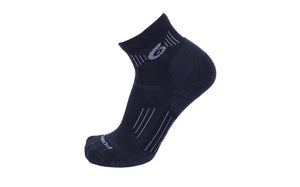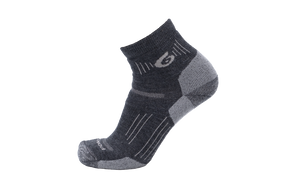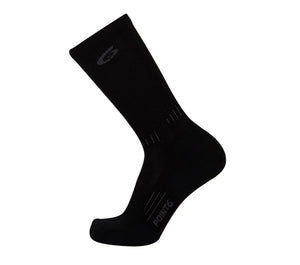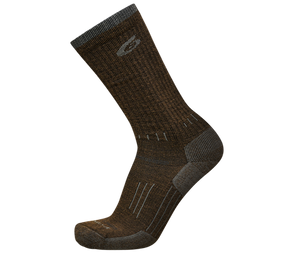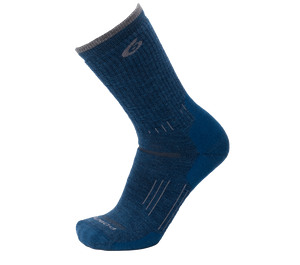Fun Foods that Satisfy on Trail

Image © Tobias Thorleifsson
This article is the third of a three part series on preparing for a backpacking trip.
by John Huston
Point6 ambassador John Huston is a professional polar explorer and outdoor educator. He started his career as an instructor at the Voyageur Outward Bound School in Ely, MN. John has led wilderness expeditions for over 20 years and has been the supervisor of Northwestern University’s new student backpacking program.
Eating well on trail can be a game changer. Most food blunders are worth the story later, but in the moment the wrong food lands somewhere on the spectrum of disappointing to performance zapping. Finding the right food for you and your team is part art and part science. The menu needs to be appetizing, satisfying, properly fuel the body, and fit size and weight constraints.
Figuring out what is going to taste good on trail is the most important step. Companies spend millions of dollars investigating what tastes will be attractive to people during exertion, but a lot of it comes down to personal preference. Some people prefer sweet, some savory, etc… Preferences can change on an expedition and in different seasons. My body typically hankers for salty, savory foods, healthy fats, and chocolate. Once you have an idea of what foods will be appealing to you in the backcountry you can build from there.
A backpacking menu needs to be lightweight and small in size. Aiming for 2 to 2.5 pounds per person per day and 3000-4000 calories per person per day are good places to start. These numbers can change depending on personal need and level of physical output. The higher the calorie to weight ratio, the lighter your food will be for the energy it provides.
Making a simple chart according to the calendar itinerary of your trip will tell you how many breakfasts, lunches, and dinners to eat on your trip. Bring some extra snacks and a lightweight emergency meal to account for an unexpected delay.
Here are some of my favorite meals/foods to eat on expedition.
Breakfast
High-octane granola is one of the most common breakfast foods on expeditions. Backpacker’s Pantry granola breakfasts is one of my choices. They are made with real butter, and are one of few off-the-shelf meals that don’t need any boosting to meet extreme exertion needs. Since my palate much prefers savory over sweet, I most often eat dinner meals for breakfast. I find eating dinners for breakfast gives a good hearty caloric foundation for the day and offers a wider variety of flavors.
Lunch/Snacks
I rarely eat an actual lunch on trail, instead I eat regularly scheduled snacks every 60 to 90 minutes (typically 60 minutes to start at trip, then lengthening to 90 minutes depending on the group). Eating and drinking at consistent time intervals keeps the body hydrated and sustained with calories. It avoids the energy crashes and lulls that can accompany going too long between intake or eating too much. Going with regularly scheduled snacks requires prepping the food ahead of time, either before the trip or during the morning in camp.
Chocolate, preferably in a form that will hold up well to heat. No corn syrup or additives, just straight up good ol’ fashioned chocolate. Chocolate is an excellent carrier of calories and the right type of sweetness for me.
Cheese. Parmesan is my favorite backcountry cheese – pure umami in cheese form. It is nice and salty, low water content, high calorie, and keeps well. Other dry cheeses are good too, sharp cheddar for example. A box of cream cheese can last a long time unopened, and then two days or so once opened if the foil is sealed well.
Bars are hit and miss for me, but a lot of people like them. Sometimes I find bars appetizing, but most often I find them to be too sweet and not very satisfying.
Meat in the form of natural-ingredient hard sausage or jerky. Jerky tends to be relatively low in calories, but I find the taste very appetizing.
Bread in the form of bagels, tortillas, pitas, or crackers. Refrigerated or frozen versions should be avoided because they mold quickly due to moisture inside the packaging. Crackers can taste good, but contain a lot of air and crumble easily. If crackers are packed inside the original box they tend to hold up a little better. At the Voyageur Outward Bound School we liked to call the bread portion of lunch the ‘vehicle’ because it carries or goes well with other menu items.
Nut butters like peanut butter or almond butter can be great by themselves or spread on bread, bars, or even on chocolate. During a recent picnic our toddler twins ate a lot of string cheese sticks dipped in peanut butter. I didn’t have the guts to try it.
Dried fruit is often too sweet for me as a backcountry snack, but a lot of people like it. My favorites are mangoes, cranberries, and candied ginger. Dried fruit is best if it is sulphur and additive free.
Nuts: I love salted nuts on trail. They have a good calorie to weight ratio. Macadamia nuts, aka butter in nut form, are my favorite. I also like pistachios, peanuts, almonds, pecans, and walnuts. You can spice and roast your own nuts for fun flavors. Try pecans tossed in brown sugar, apple cider vinegar, salt, and cayenne pepper and then roasted in the oven – fantastic.
Granola is high in calories and can be a great snack food.
Dinner
Dinner is the jewel of a polar expedition day. Sitting in a tent with my teammates, good and tired from the day’s efforts, while cradling a one liter bowl full of hot food is a truly wonderful feeling. If the dinner tastes good, satisfies our raging appetites, and has the slow burning caloric density necessary to keep us warm through the night then that good feeling at the end of the day can be amplified several levels. The mental side of all this is not to be underestimated. If we know that the meal is going to deliver on those different aspects, then it lifts morale and projects an important sense of comfort and control. It can also go the other way. If the dinners are lacking then those deficiencies are readily apparent and we go to bed knowing that we are likely to wake up cold during the night with empty gas tanks, i.e. stomachs.
The most satisfying dinner meals for me almost always include noodles and meat in a sauce that has a hearty high calorie creaminess to it. Throw in some extra olive oil for more calories if needed and get the volume right for your metabolism. Boosting these meals can take a little planning and preparation, but fully satisfying dinners are well worth the extra effort up front.
Some of my favorites dinners are Backpacker’s Pantry freeze-dried dinners like Beef Stroganoff or Three Cheese Mac & Cheese. Think of what meals you love to eat at home and try to find the freeze-dried or dehydrated equivalent. You can even dehydrate the meal yourself if you have the time.
If I have extra cheese or meat leftover from my lunch then I will sometimes add that into the dinner too.
Spice Kit
Salt, pepper, seasoning salt like Spike, hot sauce-like powder of some sort, garlic, etc… Spices can make a big difference in breakfast and dinners.
Dessert
Extra chocolate from lunch is usually good enough for me. S’mores are cliche, but are a lot of fun as a once-a-trip-treat or for the kids. On polar expeditions we’ll celebrate accomplishments every couple weeks or so with a thimble full of Scotch.
*Portions of this article were pulled or adapted from pieces John has written for Backpacker’s Pantry.


